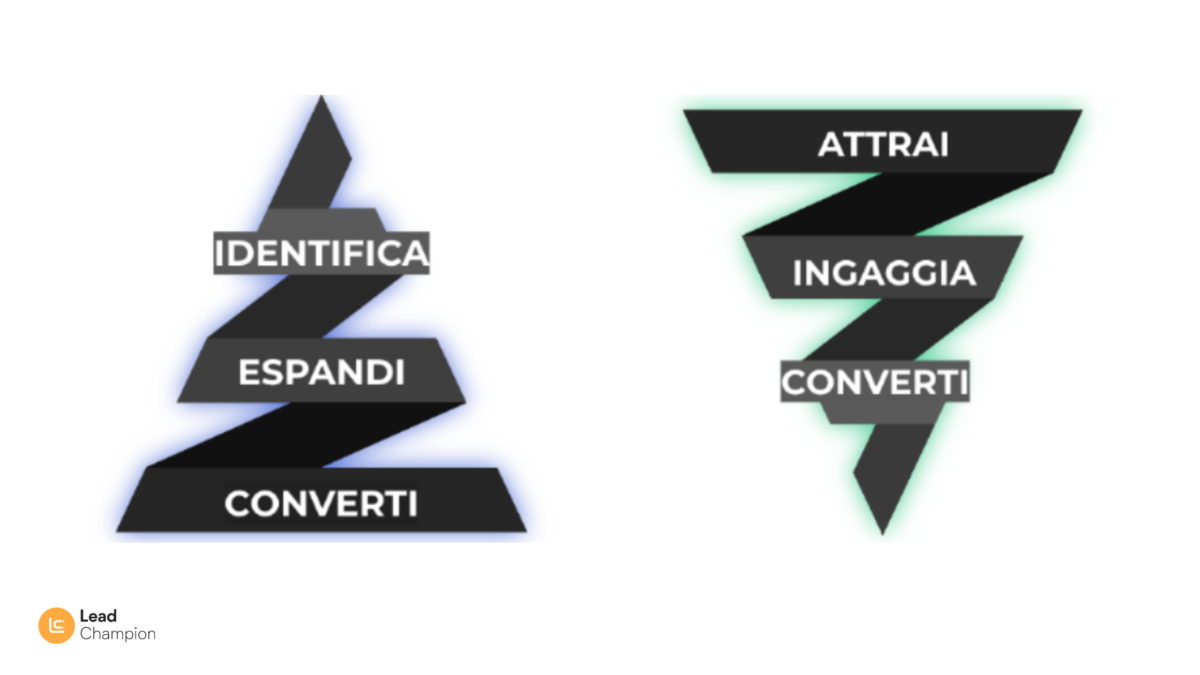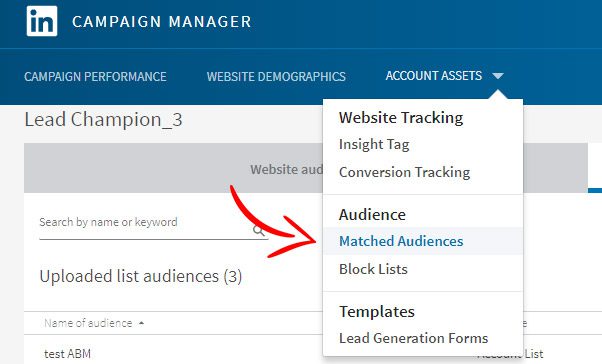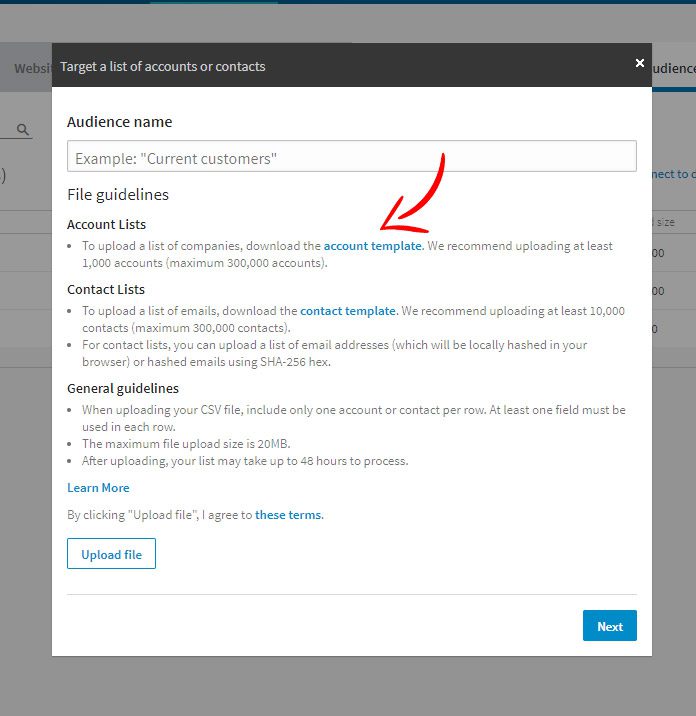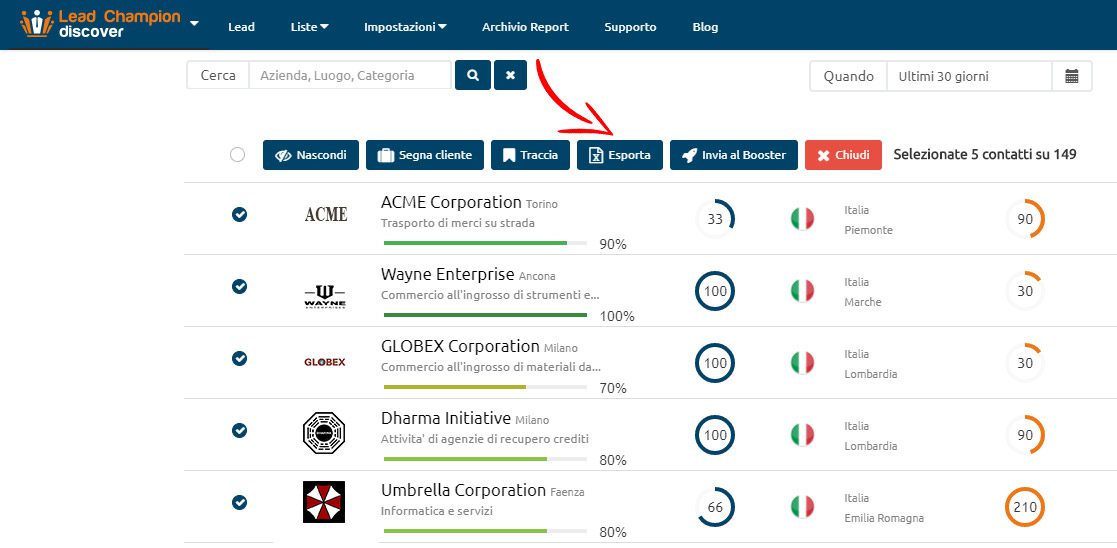Try to imagine that you are on a fishing trip. You can choose to throw a net into the water and wait (and hope) for the fish to come in. Alternatively, you can dive in and go straight for the bigger fish with a rifle or spear.
Inbound marketing can be compared to a fishing trip with nets. In this case, the nets are the content of your content strategy, which serves to attract users interested in the topic with the aim of converting them into leads. The hope is that the nets are effective enough to catch the ‘big fish’, i.e. the best leads!
Account Based Marketing (ABM) is similar to underwater hunting. Instead of waiting for the fish (the leads) to come in, you focus on catching the best targets proactively.
How Account Based Marketing works
In practice, instead of trying to reach a vast audience of potential customers, the goal of Account Based Marketing is to engage and convert specific companies that have already been selected and are considered to be on target, and that are genuinely interested and willing to purchase the product or service that the company proposes.
It is, in short, a sort of reversal of the traditional Lead Generation Funnel. Usually, in fact, the aim is to create large volumes with marketing in the initial part, concentrating then in the sales phase only on the best accounts and those closest to the ideal customer.

With ABM, on the other hand, the focus is on the most important accounts from the start and all marketing actions are designed to attract the attention of precisely these target accounts (hence the name Account Based Marketing).
How to create an Account Based Marketing plan in 7 steps
- Identify accounts: marketing and sales work in synergy to identify target accounts by creating Ideal Customer Profiles (also called Account Persona, because they are reminiscent of the B2C buyer persona concept) based on firmographic data such as turnover, number of employees, location, etc;
- Expand to stakeholders: from these accounts, all decision makers and stakeholders who might be involved are then identified;
- Select channels: each account and each stakeholder may prefer a different communication channel, so it is necessary to define which ones to act on according to the particularities of the context;
- Create content: at this point, highly customised content should be created for the target accounts and their respective interests (lead magnets, announcements, presentations, etc.);
- Engage: the strategy is to be implemented by creating touchpoints with the target accounts, by concretely creating advertisements, emails or whatever strategy has been defined;
- Land and expand: this terminology is used to identify the closing (land) and subsequent up-selling and cross-selling (expand) strategies that are facilitated by the fact that the account has been previously selected as possessing the ideal characteristics to benefit from all the products or services in the portfolio;
- Measurement and optimisation: results must be verified in numerical terms, e.g. by measuring the impact on the conversion rate for ads or the response rate for emails, and optimising the strategy.
Account Based Marketing: the advantages
- Precise ROI: the narrow set of target companies allows more precise evaluations of the return achieved. No more complex massive CRM analyses with physiologically inaccurate source attributions;
- Higher ROI: ITSMA research showed that a large proportion of B2B businesses reported higher ROI with ABM than with traditional marketing activities;
- Reduces waste: as it is a highly targeted approach, waste is minimised (think for example of costs generated by off-target leads, which cannot be here) and return on investment is greatly increased;
Better alignment between sales and marketing: in traditional inbound marketing the marketer aims to collect the highest volume of traffic and leads, confronting from time to time with sales to get feedback on the quality of the leads. In ABM, marketing and sales actions coincide precisely because the focus is defined a priori to a limited set of accounts.
ABM vs. Inbound Marketing
So, are Account Based Marketing and Inbound Marketing divergent strategies? Absolutely not, they can be used in parallel, leveraging the effectiveness of both approaches. Back to our fishing analogy, imagine you bring many fish into the net (inbound marketing) and then spear the better ones (Account Based Marketing).
It is then a matter of doing Account Based Marketing effectively. How? By focusing on companies that have already shown an interest in your offer. Let us now take an example with Lead Champion discover and LinkedIn Ads.
Lead Champion discover allows you to find out which companies visit your site and show concrete interest in your products or services through inbound marketing strategies.
Thanks to the configurable firmographic scoring you can focus precisely on your ideal customer, and find out with behavioural scoring which companies show the most interest.
This way, your Account Based Marketing strategy can target high-value accounts that have already exploited several touchpoints and have a well-defined awareness.
LinkedIn for Account Based Marketing: Matched Audiences
LinkedIn’s Matched Audiences allow you (among other things) to do ABM by defining an audience based on a list of companies by uploading a simple csv file. Leveraging Lead Champion discover you can extract precisely the leads you get on your site. Than you can select the ones with the highest score and create your list of target accounts.
This way you will be able to show your advertisements to all stakeholders in precisely these target accounts!
To do this, log into your Campaign Manager and go to Matched Audience under Account Assets.
Then under Upload list audiences you will find the button for uploading the list:
A window will then open that will allow you to download the csv template with the fields to be filled in, which will be company name and email address:
The list of companies and their emails can be obtained by exporting them from Lead Champion discover:
You can now upload the list created with the template.
A small note: LinkedIn requires a csv with a comma as column separator, if you try to upload with a different format you will get an error which is actually misleading i.e. “make sure you have a single column named email”.
Once you have uploaded, you can select the audience you have created as the recipient of your campaigns.





